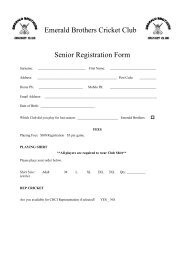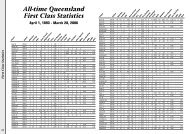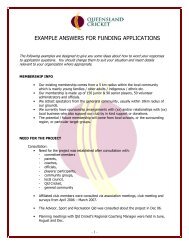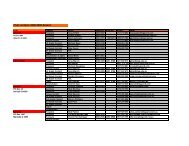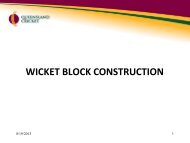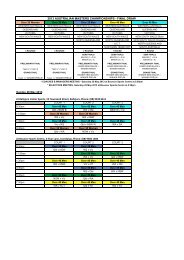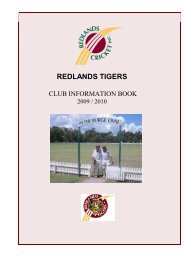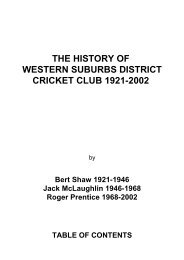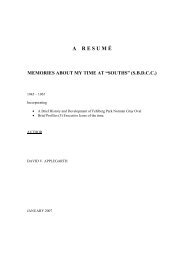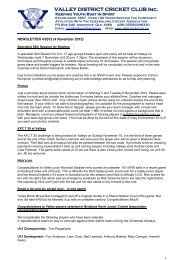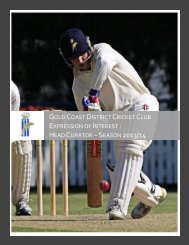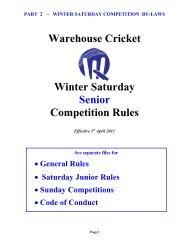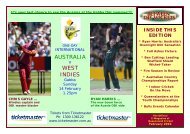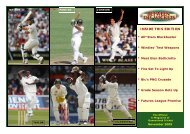QCSA Handbook on scoring 2010 - Queensland Cricket
QCSA Handbook on scoring 2010 - Queensland Cricket
QCSA Handbook on scoring 2010 - Queensland Cricket
- No tags were found...
Create successful ePaper yourself
Turn your PDF publications into a flip-book with our unique Google optimized e-Paper software.
Runs <strong>on</strong> progressive score Runs against bowlerWhen the ball is hit to the boundary, the umpire will signal 4 (see Umpiressignals, page 19). When the ball is hit over the boundary <strong>on</strong> the full, theumpire will signal 6. Try to record these boundaries in red in the scorebooksimply so they stand out more.C<strong>on</strong>centrate <strong>on</strong> watching the batters and counting the number of runs scoredrather than seeing if the ball reaches the boundary — that is the umpires’job.Boundary against batter instandard scorebookBoundary against batter in speciallyruled scorebookBoundary <strong>on</strong> progressive scoreBoundary against bowlerRunnersIf a player is injured during the course of the match, they may use a runner toassist them when they are batting. See page 61 for more informati<strong>on</strong>.Short runsIf a batter is attempting more than <strong>on</strong>e run but fails to ground the bat overthe popping crease, this run is called a ‘short run’, and is not counted as acompleted run. The umpire will signal to the scorers ‘<strong>on</strong>e short’ (see Umpiressignals, page 20), and you will reduce the number of runs that the batterswould have made by <strong>on</strong>e. The batters might have run two runs, but if <strong>on</strong>e is<strong>Queensland</strong> <strong>Cricket</strong> Scorers Associati<strong>on</strong>27



